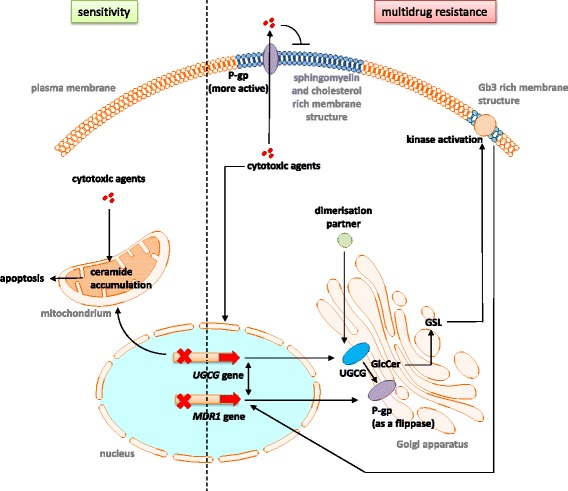Fig. 4.

Summary of the molecular mechanisms regarding the connection between UGCG and MDR1 in the process of multidrug resistance development. In sensitive cells (green) cytotoxic agents lead to apoptosis by, amongst other mechanisms, UGCG gene expression inhibition and following ceramide accumulation. During the process of multidrug resistance development (red) cytotoxic agents may lead to an increased gene expression of UGCG and MDR1 resulting in increased UGCG protein concentration and P-gp concentration. P-gp functions as an efflux transporter for the cytotoxic agents and works also as a GlcCer flippase in the Golgi apparatus supporting ceramide and GlcCer clearance. The increased GSL production leads to alteration of raft structures in the plasma membrane resulting in increased P-gp and kinase activity. The kinases induce signaling pathways, which lead to increased MDR1 gene transcription. Besides, the altered membrane composition blocks the diffusion of extracellular cytotoxic agents. MDR1 and UGCG are able to influence each other on transcriptional level. The influence of dimerization partners of UGCG in the context of multidrug resistance development is unknown. UGCG = UDP-glucose ceramide glycosyltransferase, MDR1 = multidrug resistance protein 1, P-gp = P-glycoprotein, GSL = Glycosphingolipid, Gb3 = Globotriasoylceramide
